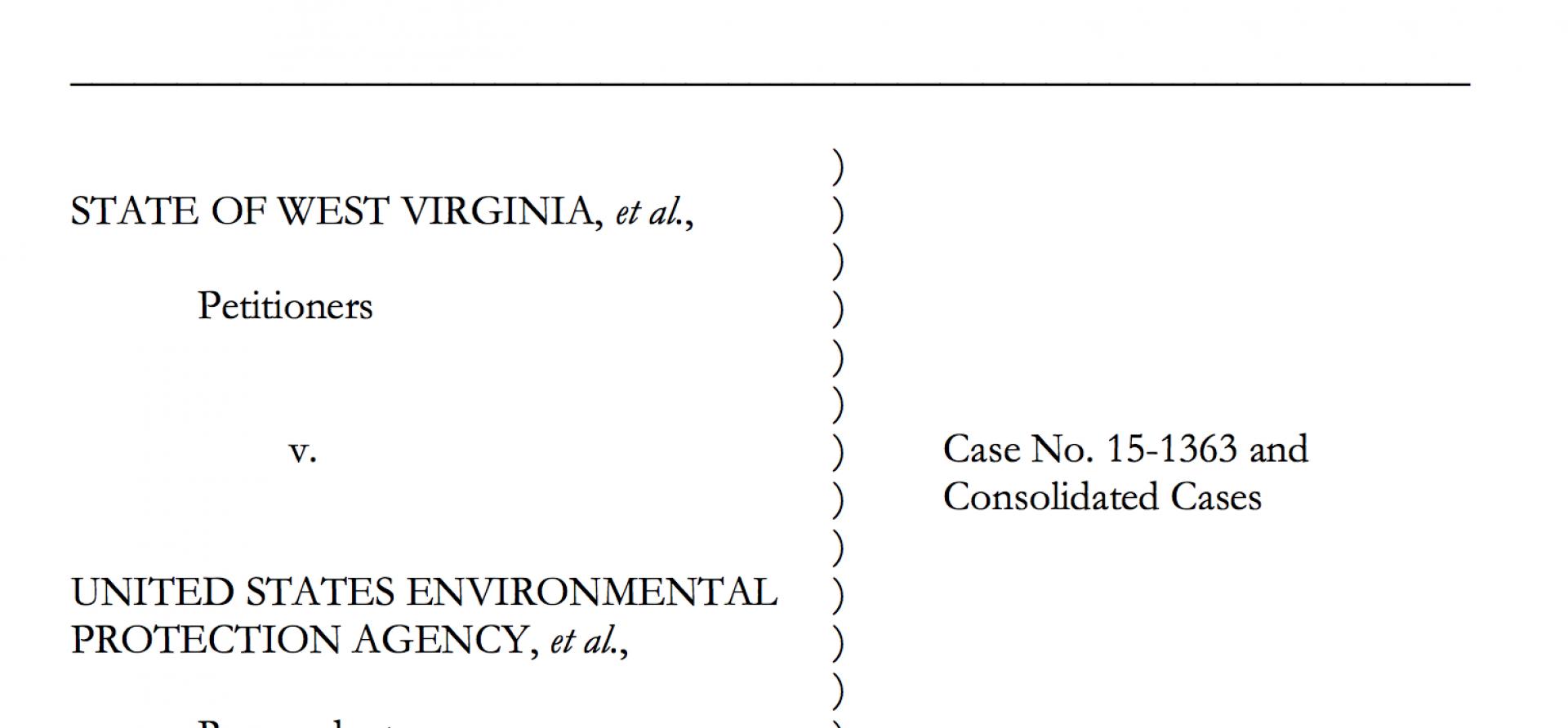The Supreme Court Case on the EPA’s Clean Power Plan Is a Red Herring

The Supreme Court’s stay against enforcement of the EPA’s Clean Power Plan comes as a potential setback to the Obama administration’s initiative to curb pollution from coal-fired power plants.
The court in its order yesterday is responding to opponents who had argued that, among other things, the EPA is being too tough on the coal-fired utility industry and that President Obama is waging a “war on coal.”
But the fact is that attacks on the Clean Power Plan serve mostly as a red herring. The coal industry is in trouble for a number of reasons that have nothing to do with the EPA. We’ve filed testimony in federal court to that effect (read our full declarations here and here).
This excerpt our testimony gets at the heart of the matter:
“Due to a number of circumstances completely independent of the Clean Power Plan, many thousands of megawatts (MW) of existing coal-fired electrical generation units in the U.S. have come under substantial economic and financial stress and have either retired, are scheduled to retire, or are at risk of retirement in the coming years. These circumstances include:
a. The steep decline of natural gas prices starting in late 2008/early 2009 due to the large and growing supply of shale gas and a subsequent decline in the cost of generating power at natural gas-fired power plants;
b. Increased competition from renewable wind and solar resources, as the total MW of installed wind and solar capacity have soared in recent years due to steep declines in the installation prices for wind and solar photovoltaic (PV) resources and support from federal and state programs;
c. Steep declines in the amount of power generated at many existing coal-fired plants as that generation has been displaced by less-expensive power from natural gas-fired plants and, in recent years, power from renewable wind and solar resources;
d. Precipitous declines in energy market prices in the deregulated wholesale markets where many existing coal plants are located;
e. An aging coal fleet that can be expected to have higher operating and maintenance costs, continuing annual capital expenditures, and degrading operating performance as it ages;
f. Rising coal plant operating and maintenance costs, including the need for additional capital expenditures (“capex”) to replace existing equipment and components that have degraded due to age or service related wear-and-tear and for upgrades required to address environmental regulations other than the Clean Power Plan;
g. Flat or relatively flat growth in electric usage driven by the Great Recession of 2008-09 and the increased deployment of energy efficiency and distributed, on-site renewable resources.”
All of these circumstances are independent of the Clean Power Plan and all have combined to undercut the viability of continued operation of coal-fired plants and the profitability of the companies that own them. These forces will also continue to undercut the coal industry in the years and decades ahead.
HERE’S SOMETHING ELSE THAT’S TRUE: BLOCKING THE CLEAN POWER PLAN WILL NOT SAVE THE COAL-MINING INDUSTRY, and that’s also because energy markets are changing and are likely to continue to change independent of the Clean Power Plan.
The court’s stay is really just a procedural blip in the coal industry’s campaign to stop environmental regulation. It’s a course of action that has historically failed and it’s one that comes too late anyway. Had the industry acknowledged market-shifting issues and worked constructively on a solution, its costs in this would have been far less and it would not have squandered so much capital on pointless acrimony.
Here are a couple of excerpts from our testimony around that point:
“A substantial amount of coal capacity was retired, announced for retirement, or targeted for conversion to gas between 2009 and March 2014—before the Clean Power Plan was even proposed, let alone finalized … analysts anticipated that actual future retirements of coal-fired electric generating unit (EGU) capacity would exceed the retired and announced retirements that had occurred to date.
“Addition retirements of coal-fired plants can be expected in coming years, independent of the Clean Power Plan, as none of the market forces and trends listed above and discussed in this declaration can reasonably be expected to abate sufficiently, if at all, to support the continued operation of many existing coal-fired plants.
“Furthermore, staying the Clean Power Plan will not make these coal-fired assets any more viable in either the near-term or the long-term.”
And here’s one that sums up the overall reality pretty well:
“All of these circumstances are independent of the Clean Power Plan and all have combined to undercut the viability of continued operation of existing coal-fired plants and the profitability of the companies that own them. As natural gas prices have fallen, regional power market prices have declined precipitously and coal plant generation has dropped steeply. Consequently, revenues from coal-fired EGUs have decreased, investments in environmental plant upgrades have been called into question, and coal has lost a significant market share to natural gas and renewable resources.”
The market, it seems, has already spoken.
David Schlissel is IEEFA director of resource planning analysis. Tom Sanzillo is IEEFA’s director of finance.
















